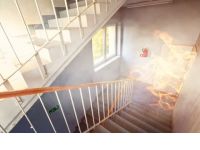
 07815 755426 Login
07815 755426 Login News
Recent News
News by Month
- April 2025
- January 2025
- October 2024
- September 2024
- July 2024
- June 2024
- April 2024
- January 2024
- October 2023
- April 2023
- January 2023
- October 2022
- July 2022
- April 2022
- January 2022
- October 2021
- July 2021
- April 2021
- January 2021
- October 2020
- July 2020
- April 2020
- January 2020
- October 2019
- July 2019
- April 2019
- January 2019
- October 2018
- July 2018
- April 2018
- January 2018
- October 2017
- September 2017
- July 2017
- April 2017
- January 2017
- October 2016
- July 2016
- May 2016
- April 2016
- March 2016
- January 2016
- August 2015
- June 2013
- November 2012
- March 2012
- November 2011
- July 2011
- June 2011
- May 2011
Your Fire Evacuation Strategy: Why you MUST Have Trained Evacuation Chair Operators on the Premises

Evacuation chairs are used to transport people who don’t have the ability to exit a building by themselves in the event of a fire or any other type of emergency. However, in too many situations, no thought is given to training anyone in their use. This makes the evacuation chair nothing more than a costly wall decoration. Here's why there MUST be a sufficiently trained chair operator on the premises ready to put the chair to use should the situation arise.
In a recent article we looked at the subject of fire safety in commercial buildings, and the corresponding obligations for owners and employers.
We discussed how the obligations are the duty of the Responsible Person, and that they include a number of tasks including undertaking a site-specific fire risk assessment; putting in place an emergency strategy and evacuation plan, and implementing suitable equipment as identified by the risk assessment.
The fire risk assessment is, amongst other things, designed to identify any assistance that may be required for specific persons in the event of an emergency evacuation. Where such assistance is required, a Personal Emergency Evacuation Plan (PEEP) must then be developed. This will determine whether an evacuation chair is required and, if it is, the type and design that is most appropriate.
Why are Evacuation Chairs Important?
Evacuation chairs are used to transport people who don't have the ability to exit a building by themselves in the event of a fire or any other type of emergency that calls for swift evacuation. Mostly the chairs are used for people who are disabled, temporarily incapacitated or heavily pregnant.
Evacuation chairs are therefore incredibly important, however, they will never fulfil their purpose unless there is someone on the premises who is trained to use them.
Evacuation chairs are often purchased as a result of a risk assessment identifying them as a necessity, but worryingly, in too many situations, no thought is given to training anyone in their use. This makes the evacuation chair nothing more than a costly wall decoration.
The Importance of Evacuation Chair Operator Training
Fire safety compliance should never be about ticking boxes. On the contrary, it should be focused on taking proactive steps to ensure processes are in place to deal with the unexpected. In terms of evacuation strategies, simply having evacuation chairs ready to use is not enough: there MUST be a sufficiently trained chair operator on the premises ready to put the chair to use should the situation arise.
It is important that the right evacuation chair training is provided to operators and that skills are kept up to date. The right training means courses that incorporate practical elements and that cover the particular brand of evacuation chair that has been purchased for the building. There are many different makes of chair and the way they are operated varies quite significantly, making generic training meaningless.
Evacuation chair operators should also keep their skills up to date and their knowledge refreshed. It is rare to actually have to put these skills into action which means they could easily diminish over time. However, there is always a possibility that a fire incident could arise, so it is imperative that there is a competent and confident evacuation chair operator on the premises at all times, which means back-up cover for holiday and other leave is vital by way of more than one operator.
Whilst resources and time pressures may make it challenging for businesses to provide such training, it is incredibly important. In-house trainers make sense and it is possible to send personnel on ‘train the trainer' courses so that they can offer training to colleagues.
Whatever you do, if your fire risk assessment identifies the need for evacuation chairs, don't overlook the vital importance of backing up your purchase with evacuation chair operator training. Without it, you could seriously fall short if an incident arises where disabled or incapacitated people need to be safely evacuated from your premises.




